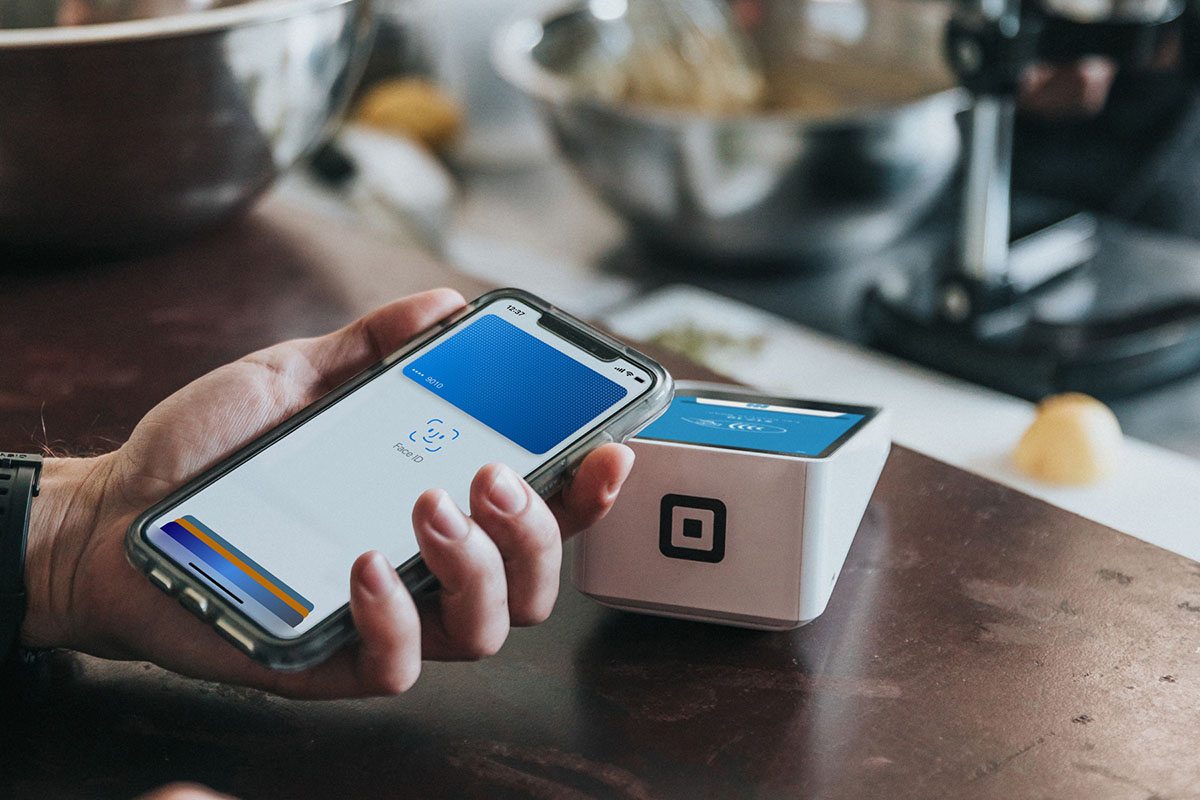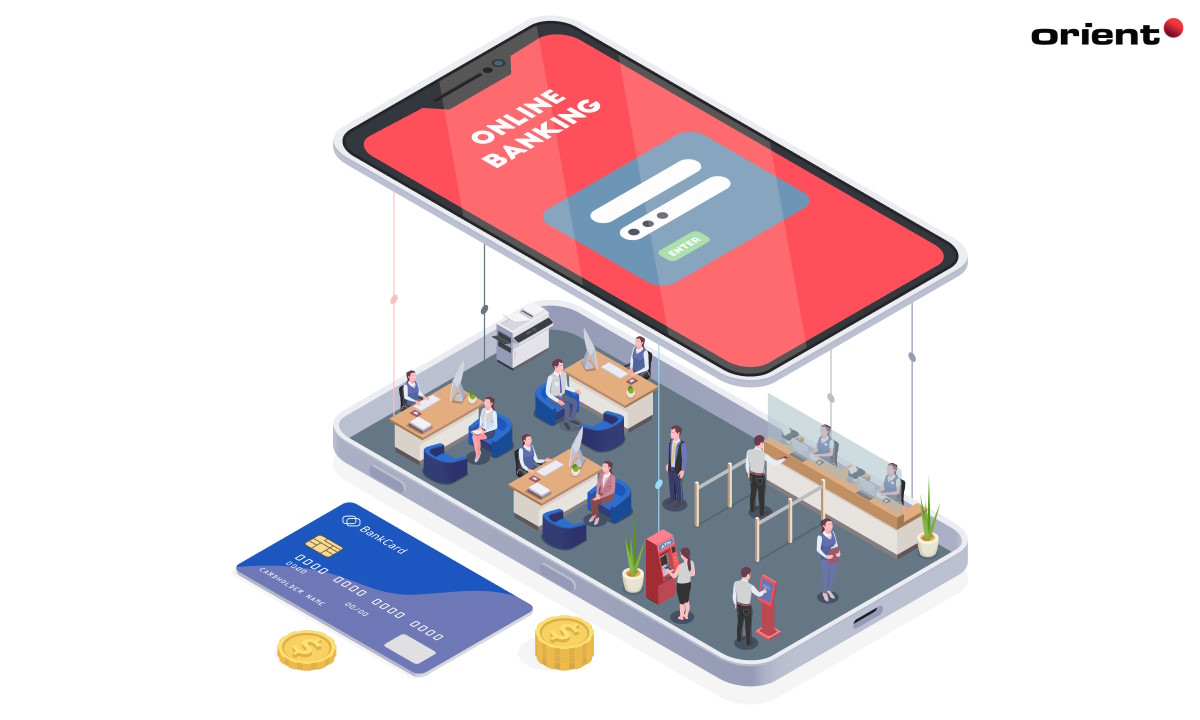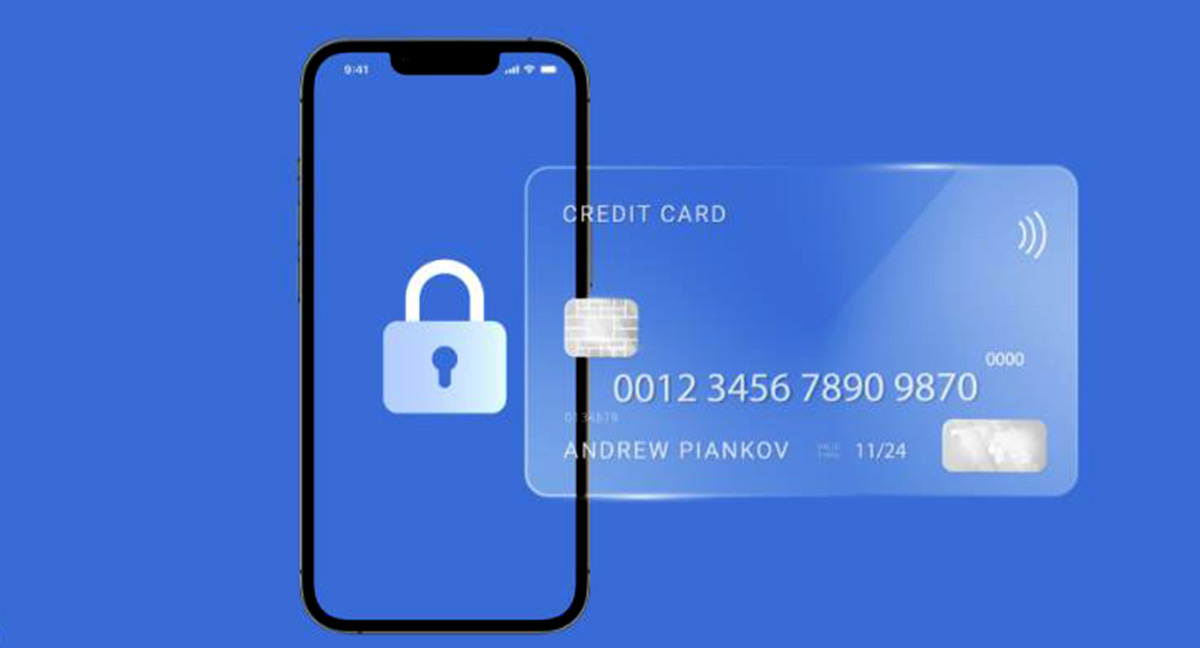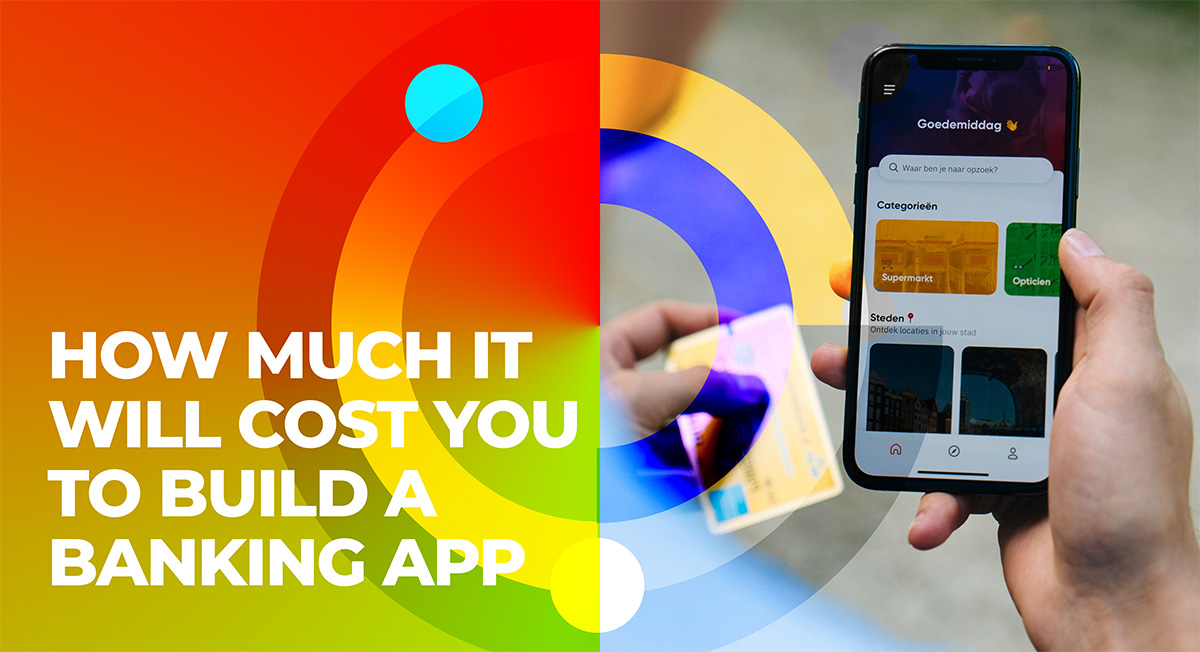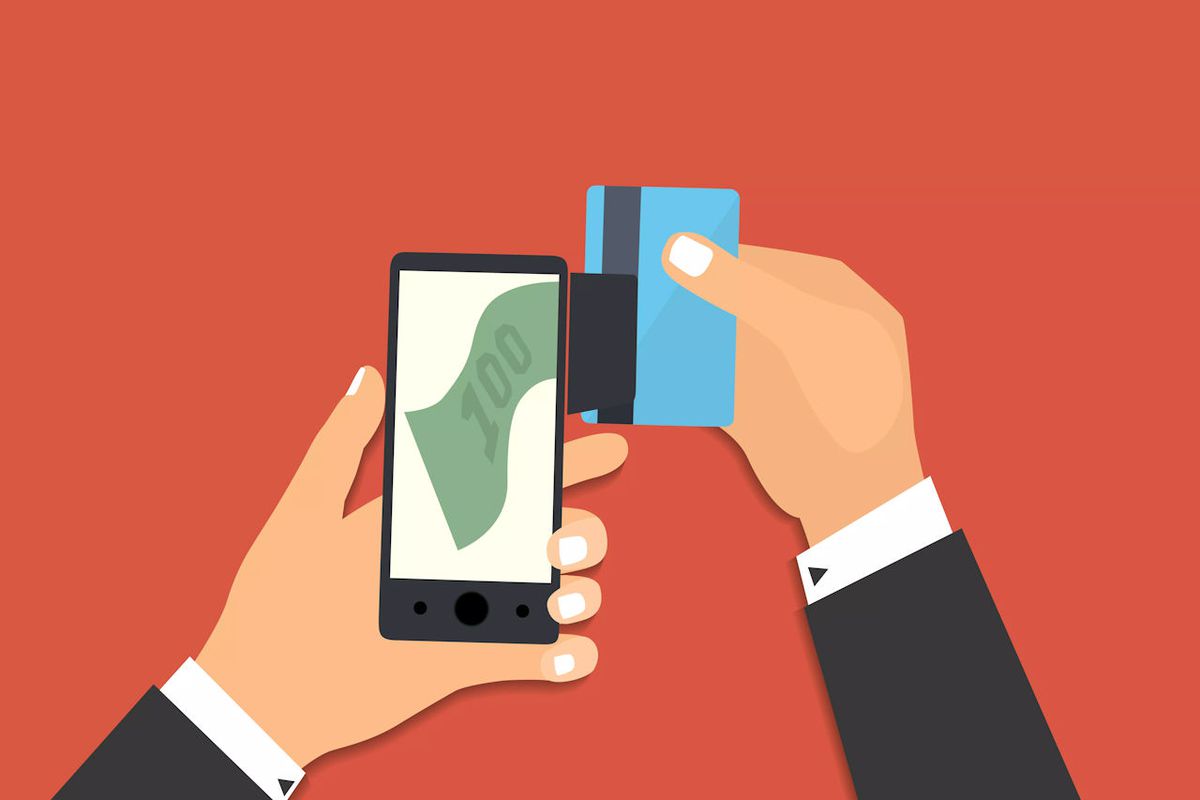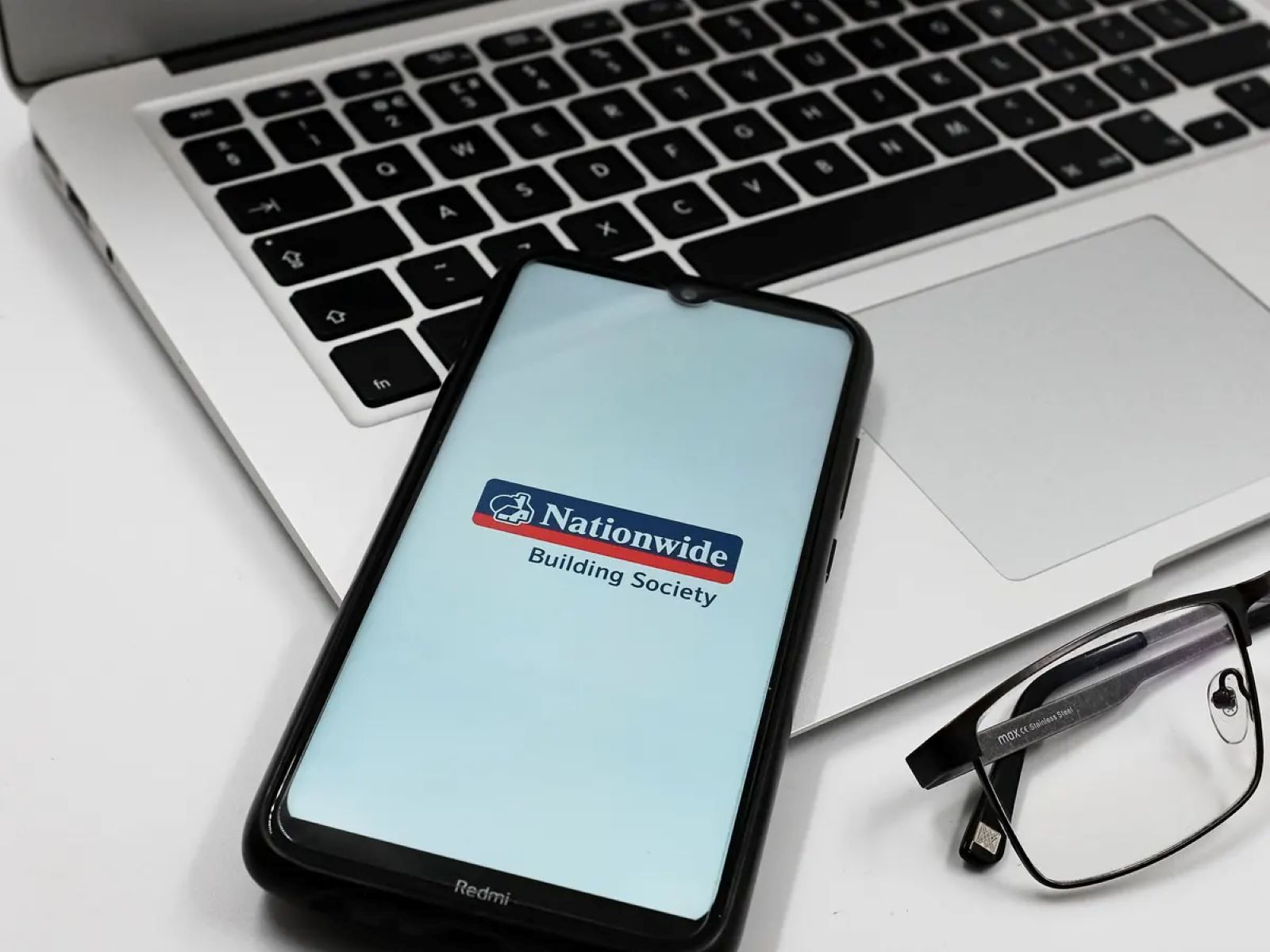

Finance
How To Develop Mobile Banking App Like Revolut
Modified: December 30, 2023
Learn how to develop a finance-focused mobile banking app similar to Revolut. Stay ahead in the digital finance world with our expert guidance.
(Many of the links in this article redirect to a specific reviewed product. Your purchase of these products through affiliate links helps to generate commission for LiveWell, at no extra cost. Learn more)
Table of Contents
- Introduction
- Understanding the Mobile Banking Landscape
- Researching and Analyzing User Needs
- Building a Secure and Reliable Infrastructure
- Designing a User-Friendly Interface
- Integrating Essential Features and Functionalities
- Implementing Payment Gateway Integration
- Ensuring Compliance with Regulatory Requirements
- Testing and Debugging the Mobile Banking App
- Launching the App and User Onboarding
- Providing Ongoing Support and Maintenance
- Conclusion
Introduction
In today’s fast-paced digital world, mobile banking has become increasingly popular among individuals looking for convenient and efficient ways to manage their finances. Mobile banking apps have revolutionized the way people interact with their banks, providing a wide range of features and functionalities right at their fingertips.
One such popular mobile banking app is Revolut. Launched in 2015, Revolut has quickly gained traction and now boasts over 15 million customers worldwide. Its success can be attributed to its user-friendly interface, extensive range of features, and innovative approach to banking.
Developing a mobile banking app like Revolut requires careful planning, meticulous attention to detail, and robust infrastructure. Understanding the mobile banking landscape, researching user needs, ensuring security and compliance, and creating an intuitive user interface are all crucial steps in the development process.
This article will guide you through the essential steps involved in developing a mobile banking app like Revolut. Whether you are a financial institution or a fintech startup, understanding the intricacies of mobile banking app development will help you create a successful and user-centric product.
From market research to user testing, from design to compliance, we will explore every aspect of the development journey. So let’s dive in and explore the key steps in developing a mobile banking app that can rival the success of Revolut.
Understanding the Mobile Banking Landscape
Before embarking on the development process, it is crucial to have a solid understanding of the mobile banking landscape. This involves researching the current market trends, studying the competition, and identifying the needs and expectations of your target audience.
Mobile banking has gained immense popularity due to its convenience and accessibility. With the growing usage of smartphones, consumers are increasingly relying on mobile apps to conduct their financial transactions and manage their accounts on the go.
By analyzing the existing mobile banking apps in the market, you can identify what sets them apart and determine the unique value proposition for your own app. Consider factors such as user experience, features, security measures, and customer reviews to gain insights into what users expect from a mobile banking app.
Additionally, understanding the regulatory and compliance environment is crucial to ensure a smooth and legally compliant development process. Familiarize yourself with the regulations and guidelines provided by financial authorities to guarantee that your app adheres to the required standards.
One key aspect to consider is security. Mobile banking apps deal with sensitive financial information, so implementing robust security measures is of utmost importance. From encryption technologies to two-factor authentication, you must prioritize data protection and build trust with your users.
Furthermore, it is important to assess the technology landscape to determine the compatibility and feasibility of your app. Research the mobile operating systems, such as iOS and Android, and evaluate which platforms are most suitable for your target audience.
Understanding the mobile banking landscape involves conducting thorough market research, studying the competition, and identifying the needs and expectations of your target audience. By gaining insights into the market trends and user preferences, you can develop a mobile banking app that stands out from the competition and meets the needs of your customers.
In the next section, we will delve into the process of researching and analyzing user needs, which is a crucial step in developing a successful mobile banking app.
Researching and Analyzing User Needs
Developing a mobile banking app that truly meets the needs of your users requires thorough research and analysis. By understanding the pain points, preferences, and expectations of your target audience, you can tailor your app to address their specific needs and provide a seamless user experience.
Start by conducting user interviews, surveys, and focus groups to gather qualitative and quantitative data about your potential users. Identify their banking habits, pain points, and desired features. This will help you uncover valuable insights and shape your app’s functionalities.
Additionally, analyze user feedback and reviews of existing mobile banking apps to gain a better understanding of what users appreciate and what areas can be improved. Pay attention to recurring themes and common complaints to ensure your app can provide a superior user experience.
Consider the demographics of your target audience, such as age, occupation, and income level, as this will influence their specific needs and preferences. For example, younger users may prioritize features like budgeting tools and peer-to-peer payments, while older users may value security and ease of use.
Competitor analysis is also crucial during this phase. Study the features, user interface, and customer feedback of other mobile banking apps in the market. Identify gaps or areas where you can provide unique value to differentiate your app from the competition.
Usability testing is another essential part of researching user needs. Create prototypes or mockups of your app and have potential users interact with them. Observe their behavior, listen to their feedback, and make necessary adjustments based on their input.
By thoroughly researching and analyzing user needs, you can develop a mobile banking app that resonates with your target audience. Tailor your app’s features, user interface, and functionalities to address their pain points and deliver a seamless and personalized banking experience.
In the next section, we will explore the crucial steps involved in building a secure and reliable infrastructure for your mobile banking app.
Building a Secure and Reliable Infrastructure
One of the most critical aspects of developing a mobile banking app is establishing a secure and reliable infrastructure. As users entrust their sensitive financial information to your app, it is vital to prioritize security and ensure that their data is protected at all times.
Here are some key considerations when building the infrastructure for your mobile banking app:
- Choose a Robust Backend System: Select a reliable backend system that can handle high volumes of transactions and user data securely. Consider technologies like cloud computing and scalable architecture to ensure seamless performance and flexibility.
- Implement Strong Authentication: To prevent unauthorized access, implement multi-factor authentication (MFA) methods such as SMS verification, biometrics, or one-time passwords. This adds an extra layer of security and reassures users that their accounts are protected.
- Employ Encryption Techniques: Encrypt user data, both at rest and in transit, to ensure that it remains confidential. Utilize strong encryption algorithms to safeguard sensitive information and protect against potential breaches.
- Adopt Secure Communication Protocols: Use secure communication protocols, such as HTTPS, to establish a secure connection between the user’s device and your app’s servers. This prevents data interception and ensures data integrity.
- Regularly Update Security Patches: Stay up to date with the latest security patches and updates for your app’s infrastructure. This will help protect against potential vulnerabilities and ensure that your app remains secure against emerging threats.
- Engage Third-Party Security Audits: Consider hiring reputable security firms to conduct regular audits and penetration testing of your app’s infrastructure. This will help identify any potential weaknesses and ensure that your app meets the highest security standards.
Building a secure and reliable infrastructure for your mobile banking app is crucial to gain the trust of your users. By implementing robust backend systems, strong authentication methods, encryption techniques, and regular security updates, you can create a safe environment for users to manage their finances.
In the next section, we will discuss the importance of designing a user-friendly interface to enhance the overall user experience of your mobile banking app.
Designing a User-Friendly Interface
The user interface (UI) of your mobile banking app plays a crucial role in providing a seamless and enjoyable user experience. A well-designed and intuitive interface can greatly enhance user engagement and satisfaction. Here are some key considerations when designing the interface for your mobile banking app:
- Keep it Simple and Intuitive: Ensure that the navigation and layout of your app are simple and intuitive. Users should be able to easily understand and navigate through the various features and functionalities without confusion.
- Consistent Visual Design: Maintain a consistent visual design throughout the app, including colors, typography, and imagery. This creates a cohesive and recognizable brand identity and helps users feel familiar and comfortable with the app.
- Prioritize Key Information: Display essential information, such as account balance, transaction history, and upcoming payments, prominently. Users should be able to access critical information in a glance, without having to navigate through multiple screens.
- Implement Clear Call-to-Actions: Use clear and descriptive labels for buttons and prompts to guide users to take desired actions. Avoid technical jargon and use language that users can easily understand.
- Optimize for Different Screen Sizes: Ensure that your app’s interface is responsive and optimized for various screen sizes and orientations. Test your app on different devices to guarantee a consistent and user-friendly experience across platforms.
- Provide Personalization Options: Allow users to customize their app settings and preferences to tailor the experience to their needs. This can include options for theme customization, notification preferences, and font size adjustments.
- Include Visual Feedback: Provide visual feedback, such as animations or progress indicators, to keep users informed about the status of their actions. This helps reduce user frustration and enhances the overall perceived performance of the app.
- Testing and Iteration: Conduct user testing and gather feedback to identify any pain points or areas of improvement in your app’s interface. Regularly iterate and refine the design based on user feedback to ensure continuous improvement.
By designing a user-friendly interface, you can create a positive and engaging user experience for your mobile banking app. A well-thought-out UI that is intuitive, visually appealing, and responsive will result in happy and satisfied users.
In the next section, we will explore the essential features and functionalities that should be integrated into your mobile banking app.
Integrating Essential Features and Functionalities
When developing a mobile banking app, integrating essential features and functionalities is key to providing a comprehensive and user-friendly experience. The following are some crucial features to consider:
- Account Management: Allow users to create and manage multiple accounts, view balances, and access transaction histories. Provide options to link external bank accounts for a holistic financial overview.
- Funds Transfer: Enable seamless peer-to-peer transfers between users’ accounts within your app. Implement features for adding beneficiaries, scheduling recurring transfers, and sending request for payments.
- Bill Payment: Allow users to pay bills directly from their mobile banking app, offering convenient and secure payment options for utilities, credit cards, loans, and more.
- Card Management: Enable users to manage their debit or credit cards within the app. Offer features such as card activation, setting spending limits, blocking and unblocking cards, and reporting lost or stolen cards.
- Budgeting and Personal Finance: Incorporate tools for tracking expenses, creating budgets, and setting financial goals. Provide visualizations and insights to help users make informed financial decisions.
- Alerts and Notifications: Implement real-time notifications and alerts to keep users informed about account activity, upcoming payments, low balances, and relevant offers or promotions.
- Customer Support: Integrate a customer support feature, such as a chatbot or in-app messaging, to assist users with their inquiries, problems, or feedback regarding their accounts and transactions.
- Security Features: Implement strong security measures, including biometric authentication (e.g., fingerprint or face recognition), two-factor authentication, and device authorization, to ensure the safety of users’ financial information.
- Integration with Third-Party Services: Consider integrating your app with popular financial services, such as investment platforms or digital wallet providers, to offer users a more comprehensive financial experience.
- Analytics and Insights: Incorporate analytics tools to gather user data and provide personalized insights and recommendations based on their spending patterns and financial goals.
When integrating features and functionalities, prioritize those that align with the needs and preferences of your target audience. Conduct user research and gather feedback to understand what users value the most in a mobile banking app and prioritize those features during development.
In the next section, we will explore the importance of implementing payment gateway integration for seamless financial transactions in your mobile banking app.
Implementing Payment Gateway Integration
Payment gateway integration is a crucial aspect of developing a mobile banking app. It enables seamless and secure financial transactions within the app, allowing users to transfer funds, make payments, and engage in other monetary activities. Here are some key considerations when implementing payment gateway integration:
- Choose a Reliable Payment Gateway: Research and select a trusted payment gateway provider that offers secure and reliable transaction processing. Consider factors such as supported payment methods, transaction fees, and integration requirements.
- Support Multiple Payment Methods: Ensure that your payment gateway supports various payment methods, such as credit cards, debit cards, bank transfers, and digital wallets. This provides flexibility and convenience to users with different preferences.
- Ensure PCI Compliance: Adhere to the Payment Card Industry Data Security Standard (PCI DSS) to protect sensitive cardholder data. Implement measures such as encryption, tokenization, and secure storage to maintain PCI compliance.
- Seamless Transaction Flow: Design a smooth and intuitive transaction flow within your app. Minimize the number of steps required for users to complete a payment or transfer, ensuring a seamless and hassle-free experience.
- Error Handling and Recovery: Implement robust error handling and recovery mechanisms to handle failed or declined transactions. Provide clear and informative error messages to guide users on how to proceed.
- Transaction History: Store transaction details securely within the app, allowing users to view and track their transaction history. Include information such as transaction amounts, dates, and recipients for easy reference.
- Security Measures: Implement additional security measures, such as two-factor authentication for payments or transaction verification via email or SMS, to add an extra layer of protection for users’ financial transactions.
- Regular Testing and Maintenance: Conduct rigorous testing to ensure the smooth functioning of payment gateway integration. Regularly update and maintain the integration to address any security vulnerabilities or performance issues.
Implementing payment gateway integration in your mobile banking app is essential for providing users with seamless and secure financial transactions. By selecting a reliable payment gateway, supporting multiple payment methods, ensuring compliance and security, and facilitating a smooth transaction flow, you can offer users a frictionless and convenient banking experience.
In the next section, we will discuss the importance of ensuring compliance with regulatory requirements when developing a mobile banking app.
Ensuring Compliance with Regulatory Requirements
When developing a mobile banking app, ensuring compliance with regulatory requirements is of utmost importance. Financial institutions and fintech startups must adhere to various regulations and guidelines to protect users’ financial data and maintain legal and ethical standards. Here are some key considerations when ensuring compliance:
- Know the Applicable Regulations: Familiarize yourself with the regulatory landscape specific to the regions where you plan to operate. Research and understand regulations such as Know Your Customer (KYC), Anti-Money Laundering (AML), and data protection laws.
- Secure User Consent and Privacy: Obtain proper user consent for collecting, storing, and processing their personal and financial data in accordance with applicable data protection laws, such as the General Data Protection Regulation (GDPR).
- Implement Strong Security Measures: Incorporate robust security measures to protect user data and transactions. This may include encryption, secure communication protocols, and firewalls to mitigate the risk of cyber threats and data breaches.
- Comply with KYC and AML Regulations: Implement thorough verification processes to comply with KYC regulations, ensuring the identities of your users are properly verified. Additionally, establish mechanisms to detect and prevent money laundering activities within your app.
- Stay Updated with Regulatory Changes: Stay informed about changes and updates to applicable regulations. Join industry associations, participate in forums, and closely monitor financial authority guidelines to ensure ongoing compliance.
- Collaborate with Legal Experts: Work closely with legal experts and compliance officers to ensure your app meets all regulatory requirements. Seek legal advice to ensure that your app is compliant with financial laws and regulations specific to your target markets.
- Implement Secure Data Storage and Retention: Establish proper data storage and retention policies in line with regulatory guidelines. Safeguard user data and ensure that it is stored securely with adequate backup and retention mechanisms.
- Regular Audits and Assessments: Conduct periodic internal and external audits and assessments to ensure compliance. Engage third-party auditors to evaluate your app’s security and compliance measures and address any identified vulnerabilities or gaps.
Ensuring compliance with regulatory requirements not only protects your users but also builds trust and credibility in the market. By understanding and adhering to relevant regulations, implementing strong security measures, and staying updated with changes, you can develop a mobile banking app that meets legal and ethical standards.
In the next section, we will explore the importance of testing and debugging your mobile banking app to ensure its functionality and reliability.
Testing and Debugging the Mobile Banking App
Testing and debugging are essential steps in the development process of a mobile banking app. Thorough testing ensures that the app functions correctly, meets user expectations, and remains secure. Here are some key considerations when testing and debugging your mobile banking app:
- Functional Testing: Conduct rigorous functional testing to ensure that all features and functionalities of your app work as intended. Test various scenarios, including account creation, fund transfers, bill payments, and card management, to validate the accuracy and reliability of the app.
- User Experience Testing: Evaluate the user experience (UX) of your app through user testing and feedback. Pay attention to navigation, screen flow, and visual design, ensuring that the app is intuitive, user-friendly, and aesthetically pleasing.
- Security Testing: Perform extensive security testing to identify vulnerabilities and ensure the integrity of user data. Test for potential security breaches, encryption effectiveness, and authentication mechanisms to protect against unauthorized access.
- Compatibility Testing: Test your app on various devices, operating systems, and screen sizes to ensure compatibility and a consistent user experience across different platforms. Identify and fix any display or functionality issues specific to certain devices.
- Performance Testing: Evaluate and optimize your app’s performance by conducting load testing and stress testing. Ensure that your app can handle a high volume of users and transactions without compromising speed or reliability.
- Usability Testing: Gather feedback from real users through usability testing. Observe how users interact with the app, identify pain points or areas of confusion, and make necessary changes to enhance the overall user experience.
- Error Handling and Debugging: Implement robust error handling mechanisms and conduct thorough debugging to identify and resolve any software bugs or issues. Continuously monitor the app for errors and crashes to provide a seamless user experience.
- Performance Monitoring: Implement monitoring tools to continuously monitor the performance and stability of your app. Track key performance indicators, such as response times and error rates, and proactively address any issues that arise.
Testing and debugging your mobile banking app is essential to ensure its functionality, security, and reliability. By conducting comprehensive tests, addressing any identified issues, and continuously monitoring performance, you can deliver a seamless and secure banking experience to your users.
In the next section, we will explore the process of launching the app and onboarding the users to maximize user acquisition and engagement.
Launching the App and User Onboarding
Launching your mobile banking app successfully and effectively onboarding users is crucial for user acquisition and engagement. A well-planned launch strategy and user onboarding process can make a significant impact on the app’s initial adoption and long-term success. Here are some key considerations when launching the app and onboarding users:
- Prepare a Marketing Strategy: Develop a comprehensive marketing strategy to generate buzz and attract users to your app. Leverage social media, online advertising, and collaborations with influencers or financial institutions to create awareness and drive downloads.
- Create Compelling App Store Presence: Optimize your app store listing with captivating screenshots, detailed descriptions, and positive reviews. Highlight the unique features and benefits of your app to entice users to download and install it.
- Streamline the Onboarding Process: Ensure that the user onboarding process is seamless and intuitive. Keep the registration process simple and request only essential information. Provide clear instructions and guidance to help users set up their accounts quickly and easily.
- Offer Personalized Onboarding: Provide personalized onboarding experiences by tailoring the app’s features and messaging based on user preferences and demographics. This enhances user engagement and fosters a sense of belonging to your app’s community.
- Provide User Education and Support: Offer educational resources, tutorials, and in-app guides to help users understand and navigate through the app’s features. Implement a support system and channels for users to ask questions and receive assistance when needed.
- Incentivize User Engagement: Encourage users to engage with your app by offering incentives, such as rewards, loyalty programs, or exclusive offers. This incentivizes users to actively utilize the app and develop a habit of regular banking activities.
- Solicit and Incorporate User Feedback: Encourage users to provide feedback on their experience with the app. Actively listen to their suggestions and implement necessary improvements based on their feedback. This fosters a sense of ownership and loyalty among users.
- Monitor User Behavior and Analytics: Continuously monitor user behavior, engagement metrics, and app performance through analytics tools. Gain insights into user preferences, identify areas for optimization, and make data-driven decisions to improve the app’s performance.
Launching the app and effectively onboarding users are critical steps to drive adoption and engagement. By implementing a thoughtful launch strategy, streamlining the onboarding process, providing user education and support, and continuously monitoring user behavior, you can maximize user acquisition and create a positive user experience.
In the final section, we will discuss the importance of providing ongoing support and maintenance to ensure the long-term success of your mobile banking app.
Providing Ongoing Support and Maintenance
Providing ongoing support and maintenance is crucial for the long-term success of your mobile banking app. Continuously improving and maintaining your app ensures that it remains reliable, secure, and up-to-date with evolving user needs and technological advancements. Here are some key considerations when providing ongoing support and maintenance:
- Regular Updates and Bug Fixes: Release regular updates to address any bugs, security vulnerabilities, or performance issues identified through user feedback or testing. Keep your app optimized and compatible with the latest mobile operating systems and devices.
- Security Monitoring and Enhancement: Continuously monitor the app’s security measures and proactively enhance them to align with emerging threats and industry best practices. Stay informed about the latest security trends and address any potential vulnerabilities promptly.
- User Support and Helpdesk: Provide a dedicated support system and helpdesk to assist users with their queries, concerns, or technical issues. Ensure that your support team is responsive and knowledgeable to provide timely and effective assistance.
- Performance Optimization: Regularly monitor and optimize the app’s performance to maintain fast response times, minimal downtime, and optimal user experience. Continuously optimize the app’s code, database, and server infrastructure to ensure efficiency.
- User Feedback and Iterative Improvements: Encourage users to provide feedback and suggestions on the app’s features and functionalities. Actively listen to user input and prioritize the implementation of valuable improvements. Regularly iterate and enhance the app based on user feedback.
- Compliance with Regulatory Changes: Stay up to date with any changes or updates in regulatory requirements and ensure that your app remains compliant. Modify the app’s functionalities or security measures as necessary to align with evolving regulations.
- Performance Analytics and Monitoring: Continuously track key performance indicators (KPIs) and user analytics to gain insights into user behavior, app usage patterns, and performance. Utilize this data to make informed decisions and continuously improve the app’s functionality and user experience.
- Engage with the App Community: Foster a sense of community and engagement by interacting with your users through social media, forums, and in-app communication channels. Listen to their needs and suggestions, and actively communicate updates or improvements to keep them engaged.
Providing ongoing support and maintenance ensures that your mobile banking app remains reliable, secure, and meets the evolving needs of your users. By regularly updating and optimizing the app, monitoring performance and security, addressing user feedback, and staying compliant with regulations, you can foster user satisfaction and loyalty in the long run.
Congratulations! You have now completed the essential steps involved in developing a mobile banking app to rival the success of Revolut. By understanding the mobile banking landscape, researching user needs, designing a user-friendly interface, integrating essential features and functionalities, implementing secure payment gateway integration, ensuring compliance with regulatory requirements, testing and debugging the app, launching it with a seamless onboarding process, and providing ongoing support and maintenance, you are well-equipped to create a successful and user-centric mobile banking app.
Good luck on your mobile banking app development journey!
Conclusion
Developing a mobile banking app is a complex endeavor that requires careful planning, meticulous attention to detail, and a deep understanding of user needs and market trends. By following the steps outlined in this article, you can create a successful and user-centric mobile banking app that rivals the success of Revolut.
Start by thoroughly researching the mobile banking landscape, analyzing user needs, and understanding the regulatory environment. This will provide a solid foundation for your app development process. Build a secure and reliable infrastructure, incorporating robust security measures, strong authentication methods, and encryption techniques to protect user data and transactions.
Design a user-friendly interface that prioritizes simplicity, intuitiveness, and consistent visual design. Integrate essential features and functionalities such as account management, funds transfer, bill payments, and card management to provide a comprehensive banking experience.
Implement payment gateway integration to enable seamless and secure financial transactions within the app. Ensure compliance with regulatory requirements, such as KYC and AML, to maintain legal and ethical standards.
Thoroughly test and debug your app to ensure its functionality, usability, security, and compatibility across different devices and platforms. Launch the app with an effective marketing strategy and streamline the onboarding process to maximize user acquisition and engagement.
Provide ongoing support and maintenance by releasing regular updates, addressing security vulnerabilities, and offering customer support. Continuously monitor performance, user behavior, and regulatory changes to make data-driven improvements and enhance the app experience.
Remember, the journey doesn’t end after the app is launched. By continuously striving for improvement, engaging with your users, and staying up to date with industry trends, you can create a mobile banking app that exceeds user expectations and stands out in the competitive market.
So, go ahead and embark on your mobile banking app development journey with confidence. Good luck!
